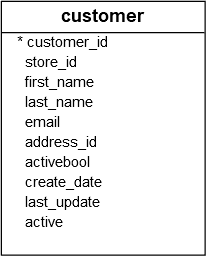PostgreSQL RIGHT() Function
Summary: in this tutorial, you will learn how to use the PostgreSQL RIGHT() function to return the last n characters in a string.
Introduction to the PostgreSQL RIGHT() function
The RIGHT() function allows you to retrieve the last n characters of a string.
Here’s the basic syntax of the RIGHT() function:
RIGHT(string, n)The PostgreSQL RIGHT() function requires two arguments:
stringis a string from which a number of the rightmost characters are returned.nis a positive integer that specifies the number of the rightmost characters in the string that should be returned.
The RIGHT() function returns the last n characters in a string. If n is negative, the RIGHT() function returns all characters in the string but first |n| (absolute) characters.
If you want to return the n first characters of a string, you can use the LEFT() function.
PostgreSQL RIGHT() function examples
Let’s take some examples of using the PostgreSQL RIGHT() function.
1) Basic PostgreSQL RIGHT() function example
The following statement uses the RIGHT() function to get the last character in the string 'XYZ':
SELECT RIGHT('XYZ', 1);Here is the result:
right
-------
Z
(1 row)To get the last two characters, you pass the value 2 as the second argument as follows:
SELECT RIGHT('XYZ', 2);Output:
right
-------
YZ
(1 row)The following statement illustrates how to use a negative integer as the second argument:
SELECT RIGHT('XYZ', - 1);In this example, the RIGHT() function returns all characters except for the first character.
right
-------
YZ
(1 row)2) Using the RIGHT() function with table data example
See the following customer table in the sample database:
 The following statement uses the
The following statement uses the RIGHT() function in WHERE clause to get all customers whose last names end with 'son':
SELECT
last_name
FROM
customer
WHERE
RIGHT(last_name, 3) = 'son';Output:
last_name
-------------
Johnson
Wilson
Anderson
Jackson
Thompson
...Summary
- Use the PostgreSQL
RIGHT()function to get the n rightmost characters in a string.